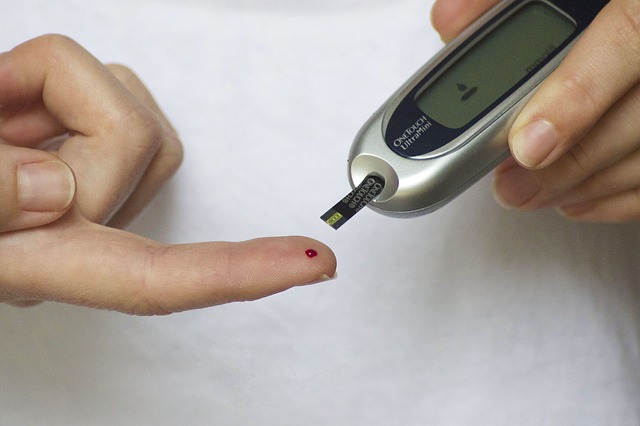29 June 2018. An engineering lab in Canada is developing a system that adapts radar technology to measure blood glucose levels, to eventually replace the blood drop samples now used by people with diabetes. A team from University of Waterloo in Ontario describes an early proof-of-concept prototype of the system in this month’s issue of the International Journal of Mobile Human-Computer Interaction (paid subscription required).
Researchers led by electrical engineering professor George Shaker are seeking new ways of measuring blood glucose levels in people with diabetes that now calls for taking blood samples. Diabetes is a chronic disorder where the pancreas does not create enough insulin to process the sugar glucose to flow into the blood stream and cells for energy in the body. In type 2 diabetes, which accounts for at least 90 percent of all diabetes cases, the pancreas produces some but not enough insulin, or the body cannot process insulin. According to the International Diabetes Federation, diabetes affects an estimated 425 million people worldwide, of which 46 million are in North America.
Because of the lack of or resistance to insulin, people with diabetes need to closely monitor their blood glucose levels, which now requires taking drops of blood for pocket-size glucometers to analyze. Shaker and colleagues in Waterloo’s Centre for Intelligent Antenna and Radio Systems — with associates at Google and the semiconductor company Infineon Technologies in Neubiberg, Germany — are designing a non-invasive method for taking these measurements, to save the inconvenience and for some people pain of drawing blood. The authors say measuring glucose in fluids like sweat or tears do not correlate well with blood glucose measurements, due to these fluids’ sensitivity to metabolic changes.
The researchers’ proposed technology is based on work begun at Google called Project Soli that uses miniaturized radar devices to send out, detect, and measure gestures to be built into mobile and wearable systems. The Waterloo team is adapting the Project Soli concepts for measuring blood glucose levels. Instead of gestures, the technology measures electrical variations in blood properties detected with radar under the skin, without coming into contact with blood. The Waterloo prototype uses chips made by Infineon, which is also developing miniaturized radar devices for advanced automotive applications.
Signals returned by the chips are converted into data with machine-learning algorithms to produce estimates of blood glucose levels. The algorithms adjust and interpret some 500 factors derived from the scattered electromagnetic energy readings, converting the signals into data that provide measurements of blood glucose levels. The Waterloo team tested the technology on lab models, including animal meat, but also estimated glucose levels in blood samples from human volunteers, and found the radar devices were 85 percent as accurate as glucometer measurements.
The researchers point out that a great deal of work needs to be done to advance the technology from this early prototype into a working system for clinical testing. The radar chips need to be miniaturized further and made to work under lower power, and the machine-learning algorithms need to be packaged into self-contained computational modules for wearable devices. The team next plans to refine the algorithms to more precisely measure blood glucose levels and begin testing the device with human skin and tissue samples.
More from Science & Enterprise:
- Connected Meters, Coaching Help Improve Diabetes Outcomes
- FDA Authorizes Interoperable Glucose Monitoring System
- Low Carb Diet, Biomarker Tracking Help Reverse Diabetes
- Blood Glucose Monitor Built Into Smartphone Case
- App Users Report Lower Blood Glucose Levels
* * *


 RSS - Posts
RSS - Posts
You must be logged in to post a comment.